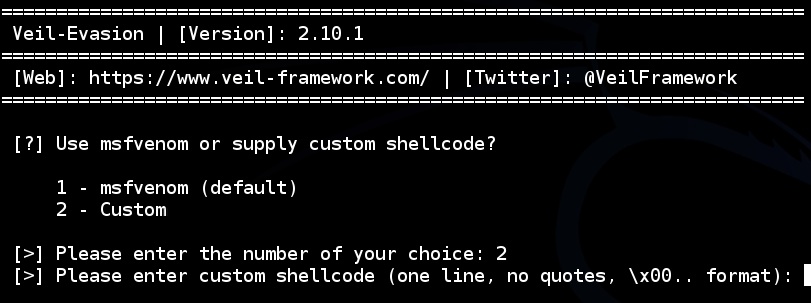The Veil Framework is a collection of red team tools, focused on evading detection. The Veil Evasion project is a tool to generate artifacts that get past anti-virus. It’s worth getting to know Veil. It has a lot of capability built into it.
Cobalt Strike 2.0’s Payload Generator includes an option to output a Cobalt Strike payload in a format that’s Veil-ready. Go to Attacks -> Packages -> Payload Generator to open it. Choose your listener and set veil as the output type. Save the file it generates.
Now, go to Veil and choose the type of artifact you want to create. Veil will ask if you want to use msfvenom or supply your own shellcode. Select the option to supply your own shellcode. Paste in the contents of the veil file made by Cobalt Strike. Congratulations–you have made a Veil artifact with a Cobalt Strike payload.
Here’s a video that shows this process:
Before Cobalt Strike 2.0, there were ways to deliver Beacon with Veil. Cobalt Strike’s Beacon is compatible with the Metasploit Framework’s reverse_http and reverse_https stagers. You had the option to use the Metasploit Framework’s stagers to deliver Beacon. That said, Cobalt Strike’s Beacon has its own stagers that are not available to the Metasploit Framework. Cobalt Strike’s DNS stager will download Beacon over DNS and inject it into memory. Cobalt Strike’s HTTP/S stagers account for proxy restrictions that other HTTP/S stagers do not. This new option in Cobalt Strike’s Payload Generator lets you use these custom stagers with Veil.

